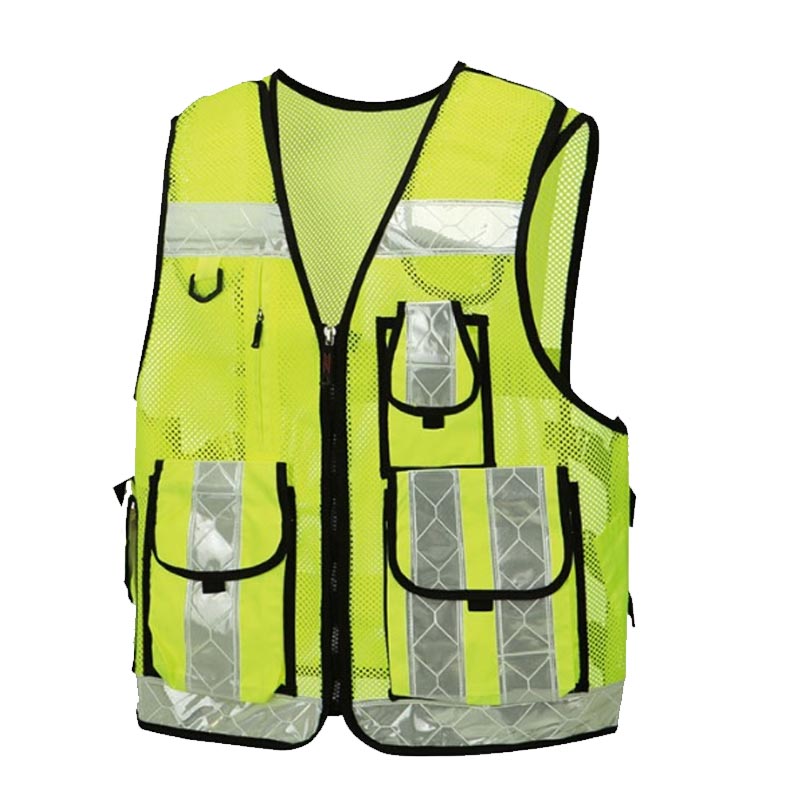Cycling has become an increasingly popular mode of transportation and exercise in recent years, with more and more people taking to the roads and bike paths on a daily basis. While cycling offers numerous benefits, it can also be a dangerous activity if safety measures are not properly implemented. One of the most important safety measures for cyclists is the use of reflective clothing. In this article, we will discuss why reflective clothing is so important for cyclists and how it can help keep them safe on the roads.
Reflective clothing is specifically designed to reflect light, making the wearer more visible to others in low-light conditions. This is especially important for cyclists, who are often hard to see on the road at night or in other low-light situations. By wearing reflective clothing, cyclists can make themselves more visible to other road users, reducing their risk of accidents and injuries.
According to a study conducted by the University of South Australia, reflective clothing can increase a cyclist’s visibility by up to 400%. The study found that when a driver’s headlights hit a reflective garment, the light is reflected back toward the driver’s eyes with much greater intensity than when it hits a non-reflective garment. This increased visibility can make a significant difference in a driver’s ability to see and avoid a cyclist on the road.
The principle of reflective clothing
In order to understand why reflective clothing is so effective at increasing visibility, it is helpful to understand how the human eye works. Our eyes are designed to be sensitive to light in the visible spectrum, which ranges from about 400 to 700 nanometers. This means that our eyes are able to detect colors like red, green, and blue, but they are not very sensitive to colors outside of this range.
Reflective materials, on the other hand, are designed to reflect light in the infrared spectrum, which ranges from about 750 to 2500 nanometers. Because our eyes are not very sensitive to infrared light, reflective materials appear almost completely black in normal lighting conditions. However, when they are exposed to a light source, such as the headlights of a car, they reflect the light back in a way that is highly visible to the human eye.
Advantages of reflective clothing
One of the biggest advantages of reflective clothing is that it can help to prevent collisions with vehicles. In many cases, car and truck drivers may not see a cyclist until it is too late, resulting in a collision. By wearing reflective clothing, cyclists can make themselves more visible to drivers, giving them more time to react and avoid a potential accident. For example, if a driver sees a cyclist wearing reflective clothing from a distance of 200 meters, they will have more time to slow down or move over to give the cyclist plenty of room. This can be especially important on roads without bike lanes, where cyclists may be forced to ride in close proximity to vehicles.
Another reason why reflective clothing is important for cyclists is that it can help to improve their overall visibility in a variety of lighting conditions. In addition to reflecting light, reflective clothing can also be designed to be bright and colorful, making it easier for other road users to see the cyclist even in daylight. This can be especially useful for cyclists who frequently ride in busy urban areas, where there is a higher risk of collisions with other road users.
In addition to improving safety, reflective clothing can also help to improve the overall visibility of cyclists on the road. This can be especially important for group rides, where multiple cyclists may be riding together. By wearing reflective clothing, all of the riders in the group can make themselves more visible to other road users, improving their overall safety and visibility on the road.
Aside from the safety benefits, reflective clothing can also provide a number of other advantages for cyclists. For example, reflective clothing can help to keep the wearer warm and comfortable in cool or cold weather. This is especially important for long-distance riders, who may be exposed to the elements for extended periods of time. Reflective clothing can also be designed to be breathable and moisture-wicking, helping to keep the rider dry and comfortable during even the most intense rides.
In addition to the safety benefits, reflective clothing can also provide practical advantages for cyclists. For example, reflective clothing can help to improve the visibility of cyclists to pedestrians, who may not always be paying attention to the road. This can be especially important in urban areas, where pedestrians may be distracted by their phones or other distractions. By wearing reflective clothing, cyclists can make themselves more visible to pedestrians, helping to prevent collisions and keep everyone safe.
Another practical advantage of reflective clothing is that it can help to improve the overall visibility of cyclists in traffic. In many cases, drivers may not see a cyclist until it is too late, especially if the cyclist is wearing dark clothing. By wearing reflective clothing, cyclists can make themselves more visible to drivers, giving them more time to react and avoid a potential accident. This can be especially important in busy urban areas, where traffic can be heavy and unpredictable.
In addition to the safety and practical advantages of reflective clothing, it can also provide psychological benefits for cyclists. For example, reflective clothing can help to increase a cyclist’s confidence on the road. By making themselves more visible to other road users, cyclists can feel more secure and confident while riding, allowing them to focus on the ride and enjoy themselves. Reflective clothing can also help to increase a cyclist’s visibility to other riders, which can be especially important in group rides or when riding in unfamiliar areas.
There are many different types of reflective clothing available for cyclists. Some common options include reflective jackets , vests, and leg bands. Reflective jackets and vests are great for providing full coverage and maximum visibility. Leg bands, on the other hand, are a more discreet option that can be easily attached to your pants or shorts.
Overall, reflective clothing is an essential piece of safety equipment for any cyclist. By making themselves more visible to other road users, cyclists can reduce their risk of accidents and injuries. Reflective clothing can also provide a number of other benefits, such as improved visibility in a variety of lighting conditions and added warmth and comfort during rides. Whether you’re a casual rider or a serious cyclist, reflective clothing is an important part of staying safe on the road.





